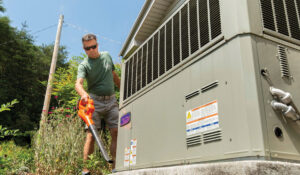Pat and Brad: It’s almost time to plant our garden, and we’re wondering if there are ways to save energy when planting. How can we make our home garden more efficient? – Leandra
Dear Leandra: We’re glad you asked! One approach to gardening is no-till, also known as no-dig. No-till gardens have been gaining ground with farmers in recent years, partly because of the energy savings. The principles behind no-till gardening work well for large farms, as well as smaller home gardens.
No-till can be done without chemicals. Research shows this approach can produce more fruits and vegetables within a few years, and they get better over the long term. Best of all, this approach to gardening takes less time and effort—and you won’t have to fire up the rototiller!
Don’t break up the soil
We usually think breaking up the soil and mixing it up keeps weeds from growing, but tilling can bring weed seeds deep in the soil to the top where they can germinate and grow. Tilling also destroys microbes in the soil that bring nutrients to the plants.
Use plenty of compost
Spread thick layers of compost and other mulch on top of the soil. This will feed the soil from above, the same way leaves in a forest fall to the ground, decompose and turn into rich soil over time. When you build up the soil by spreading layers of compost and mulch on top, the weed seeds are kept dormant. Mulch keeps the soil moist, so less water is used to irrigate, which means less electricity use for pumping water from your well or community water system.
Starting your garden
Your no-till garden can be planted at ground-level or in raised beds. Start by laying weed-blocking material on top of the old dirt. Sheets of cardboard are often used because they will decompose over time. Then spread at least 4 inches of weed-free soil or compost on top.
If the soil under the cardboard is reasonably loose, start planting right away. Your garden may be less productive the first year but will grow healthier and have less weeds every season after. If the ground is heavily compacted or clay, you may have to till in some compost or healthy soil before laying down the cardboard and give it a year for the new mix to get looser.
In the fall, cut the dead plants at ground level and leave the roots in the ground to decompose over the winter. You may want to plant a cover crop, like peas, fava beans or barley late in the growing season. Setting up a no-till garden takes a bit of work, but it will require less maintenance in the future and get healthier every year.
If you’re ready to try your hand at planting a no-till garden, utilize your local extension office as a resource. We hope these tips will help you prepare for a more energy efficient garden this season. Happy planting—and eating!









